Did You Know?
Sharda Peeth is one of the oldest surviving temples in the Kashmir region, renowned for its architectural elegance and historical significance as an ancient center of learning and pilgrimage.
34°47'50.3"N 74°11'28.7"E
Sharda Peeth is one of the oldest surviving temples in the Kashmir region, renowned for its architectural elegance and historical significance as an ancient center of learning and pilgrimage.
The Best Time to Visit Azad Kashmir Region is Summers. Preferably from April to September. Winters are Extremely Cold and Snowfall blocks most of access. Hence Winters are not recommended.

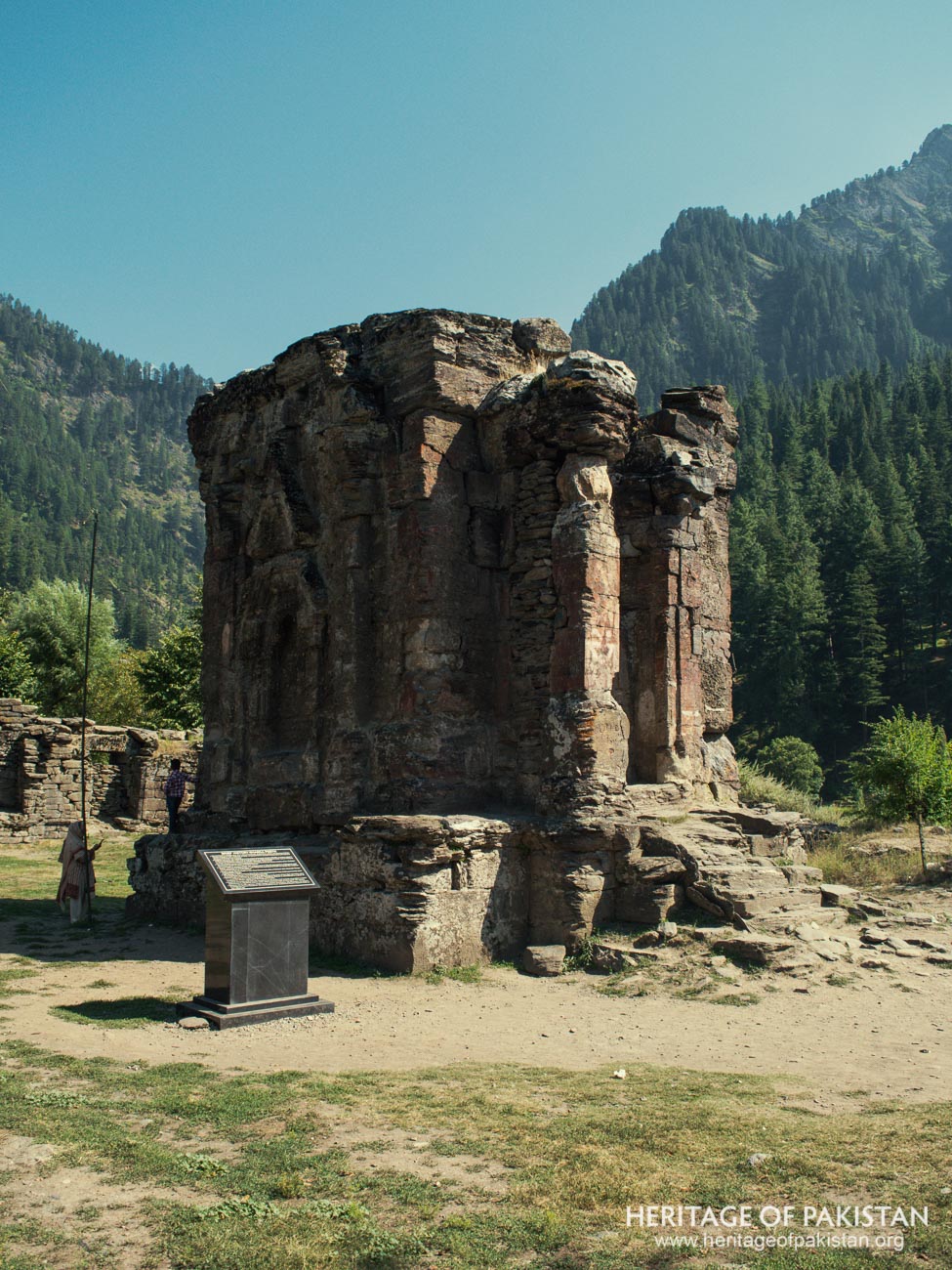
The Sharda Peeth Temple, situated in Sharda town in Neelum Valley, Azad Kashmir, is an ancient Kashmiri temple from the Hindu period. Scholars estimate that Sharda Peeth Temple was constructed around 8th Century during the zenith of Hindu Temple Architecture period and has similar features to other Kashmir Hindu temples built during the same period in the larger Kashmir region. The architectural remains of this complex are found in the village of Śharda, Neelum Valley at a distance of 130km from Muzaffarabad, and have been conventionally identified by scholars as a Hindu temple dedicated to the goddess Sarada. It was a temple as well a center of religious education. As per account, Sharda temple was one of the most prominent temple universities in the Indian subcontinent and pilgrims visited the place from all over India.
The temple is part of the three famous Tirthas of Kashmir, alongside the temple at Martand and the holy cave at Lord Amarnath, and has historically remained one of the holiest places for Hindu Pandits. Some historians contend that similarities between Sharda Peeth and the Martand Sun Temple suggest that King Lalitaditya may have constructed both of these structures in the eighth century AD. Sharda Peeth was also a center of pilgrimage for Hindus who believed that the temple was the abode of the Goddess Saraswati, the deity of learning and wisdom. Over the centuries, it welcomed many historical and religious figures, including the renowned Hindu philosopher Adi Shankaracharya.
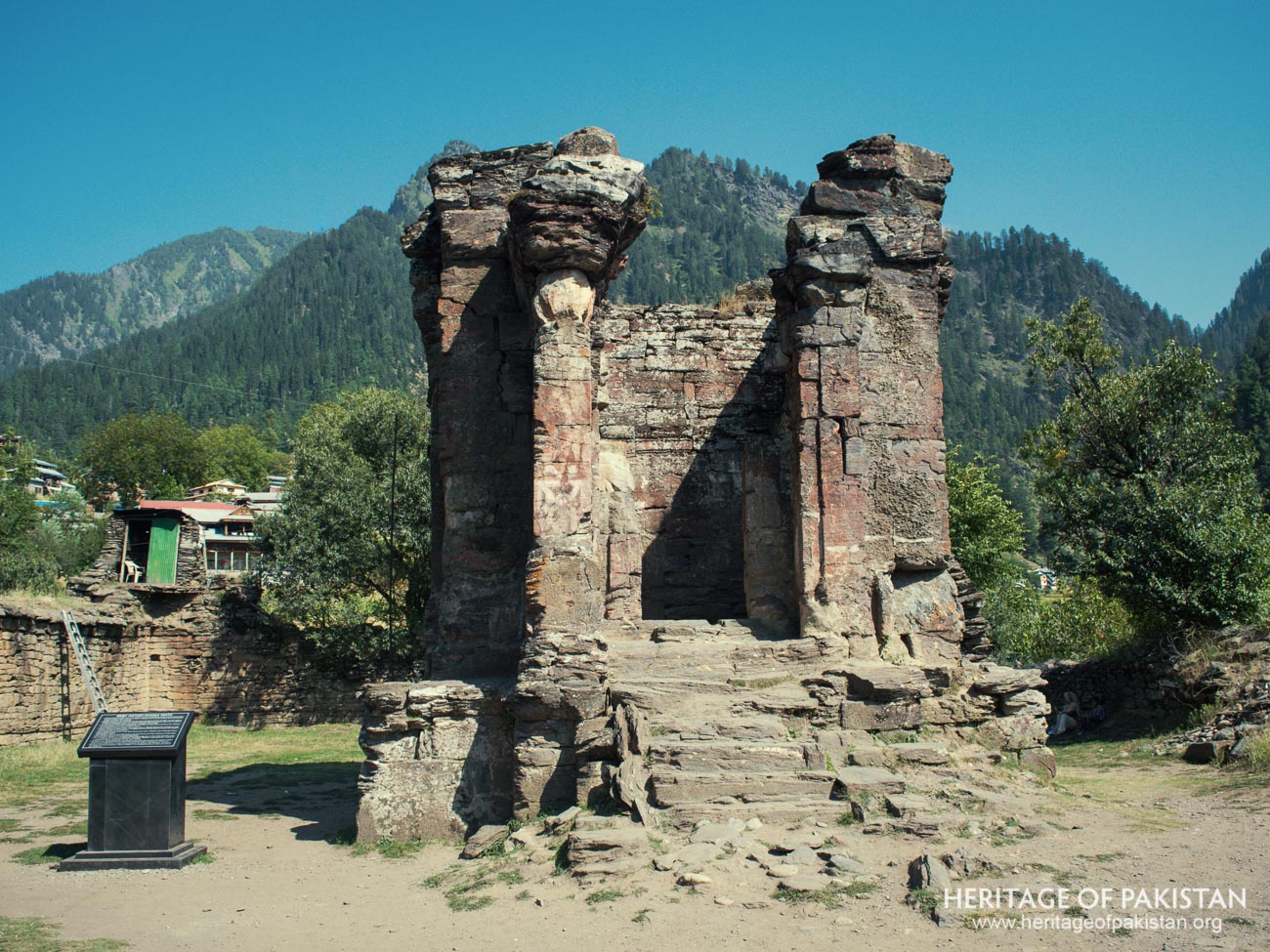
The Sharda Peeth Temple's earliest reference is found in the Puranas. The famous Nilamata Purana, an ancient Sanskrit work from Kashmir, deals with the Tīrathas (sacred places) and rituals of Kashmir. By the 11th century, Sharda Peeth was among the most revered places of worship in the Indian subcontinent, as described in Al-Beruni's chronicle of India. Notably, Al-Biruni mentioned it not in his description of Kashmir but in his list of the most famous Hindu temples in the Indian subcontinent, alongside the Multan Sun Temple, the Sthaneshwar Mahadev Temple, and the Somnath temple. Historically, Kashmir has been part of various empires and influenced by different religious traditions. It was part of the Kushan Empire in the second century C.E. and was under Buddhist influence as early as the Ashokan period. The famous Chinese monk, Xuanzang, who traveled across India in the 7th century, documented the status of Buddhism in Kashmir. Despite these influences, the worship of Shakti and the reverence for the Goddess Sharda remained central to Kashmiri Hinduism.
There are also many myths and legends surrounding the site. One popular folk tale involves a giant who fell in love with a princess. When she expressed her desire for a palace at the site, the giant began constructing it. However, he could not complete the roof before the morning prayer (Azan), marking the end of his working period. As a result, the temple remains roofless to this day, according to the legend.
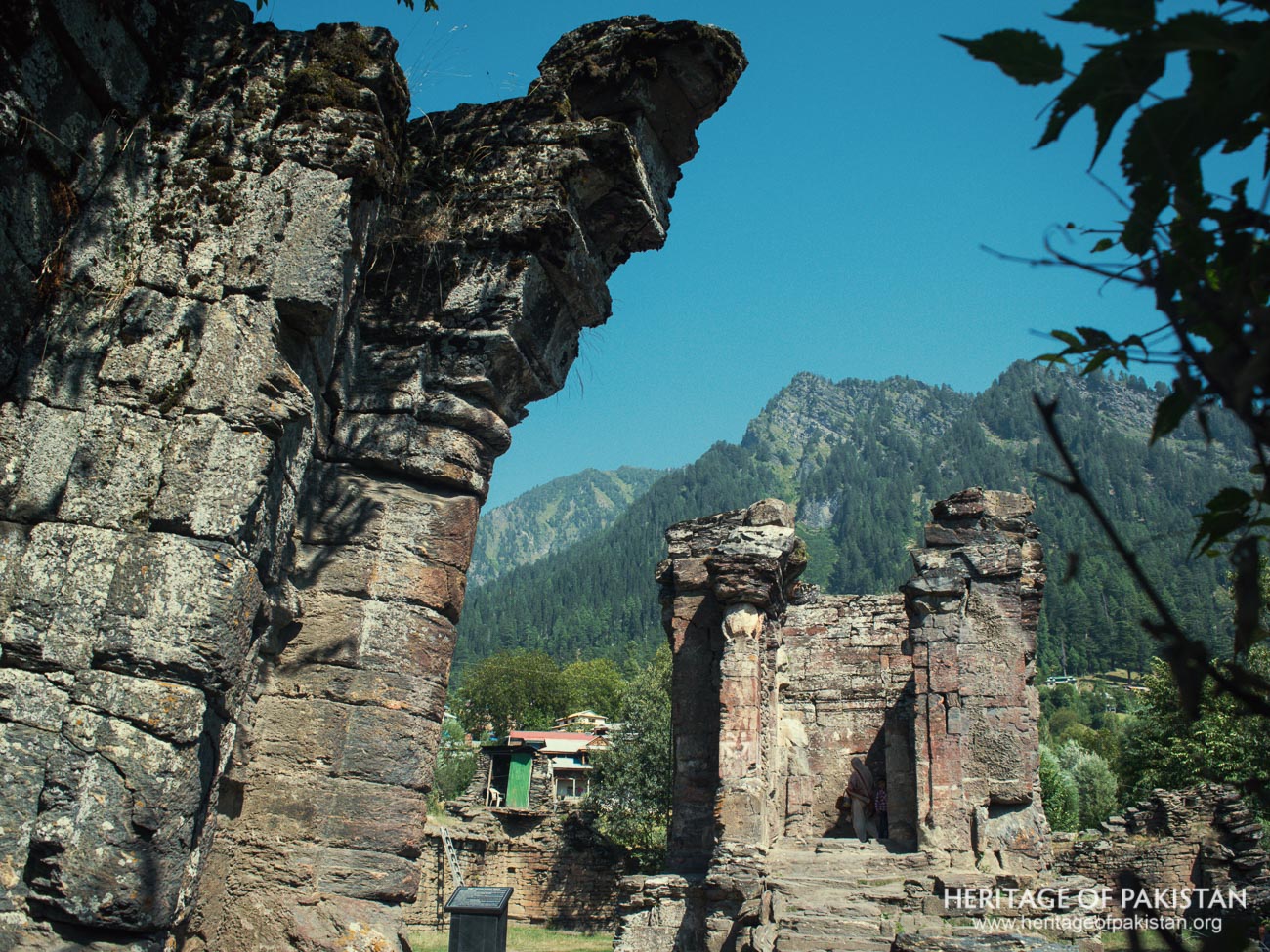
The Sanskrit etymology of "Sharda" provides further insight into the site's importance. The Sharda Peeth Temple, meaning "Seat of Sharda," is dedicated to the Kashmiri Goddess 'Sharada', another name for the Hindu goddess Saraswati, who is regarded by Hindus as the goddess of learning and knowledge. Kashmir has long been a center for Shakti worship, with numerous shrines dedicated to the worship of the mother goddess. Sarada, the goddess of learning, has been particularly venerated in Kashmir. The Nilmatpurana, an ancient Kashmiri text, describes the Sharda temple as a temple of Durga also, indicating that Sarada is also worshipped as Durga in Kashmir. Goddess Sarada holds a celebrated position among Kashmiri Pandit Hindus, with Hindu Pandits offering reverence to her through the recitation of ‘Sarada Wardha Devi Mukhdata Saraswati Namaste Namaste Namaste Namo Nama’, which translates to ‘Goddess Sarada, one who grants boons of learning, scholarship, and liberation from worldly woes, I bow to her’.
In ancient times, Sharda Peeth functioned as a university and a center of learning, playing a crucial role in the development and popularization of the Sharada script in North India, leading to the script being named after it. Some sources also refer to Sharda as a Buddhist University, however its Hindu roots are more likely as the architecture is similar to other Kashmiri Hindu temples in the region. The Sharda temple has played a significant historical role in Kashmiri Pandit religious culture and is believed to be the earliest shrine dedicated to Shaktism. The temple was an essential center of the Kashmir Shaivism tradition of Hinduism and served as an important center of learning, offering teachings in various fields, such as philosophy, theology, mathematics, and linguistics.
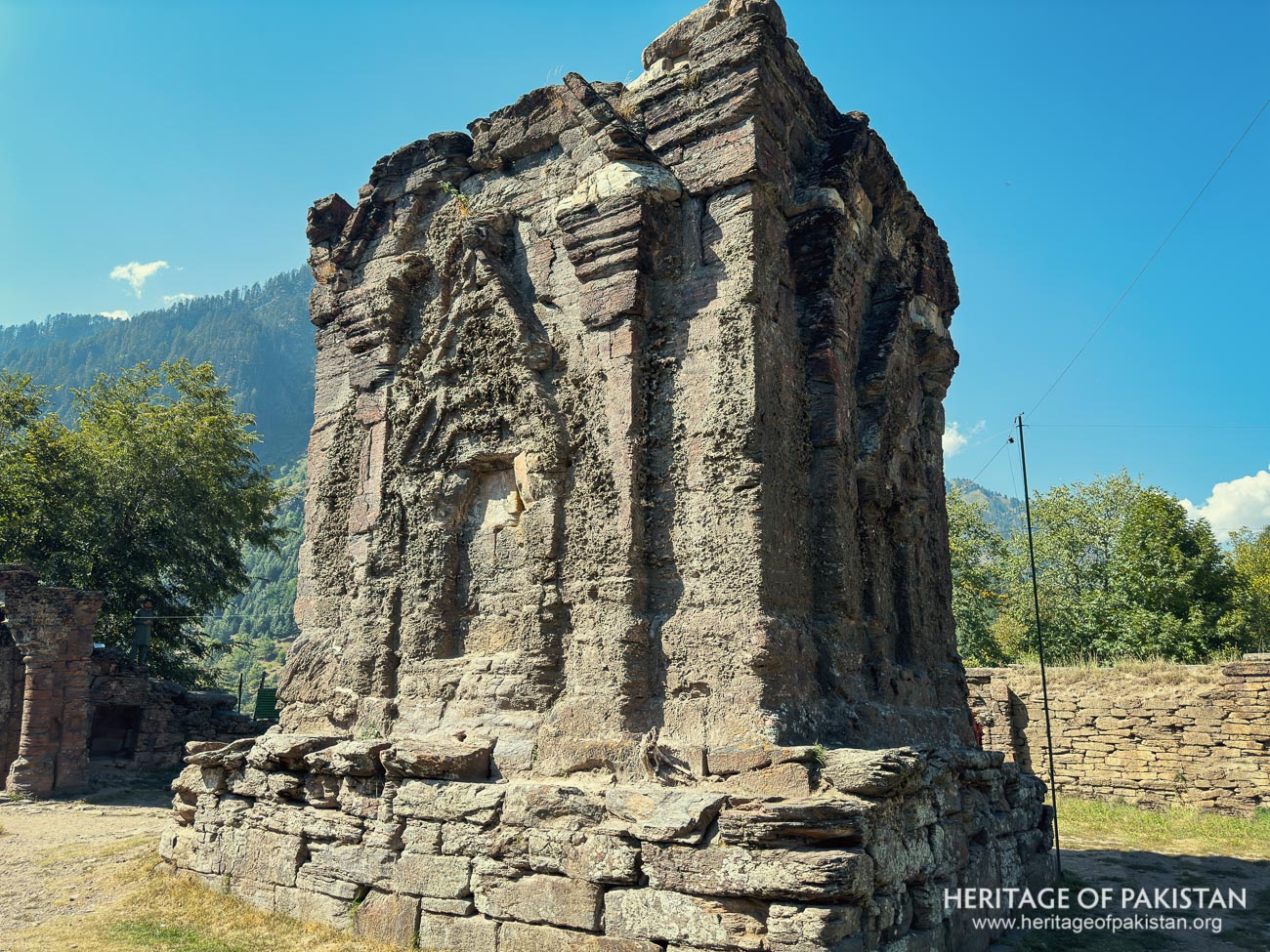
The Sharda Peeth Temple in Neelum Valley is situated on top of a mountain, in the Sharda region of Azad Kashmir, highlighting the unique sites of temples dedicated to Shaktism. The architectural style of the Sharda Peeth Temple is indicative of the Kashmiri School of Hindu Architecture, and its resemblance to the Sun Temple of Martand & Avantipur Temple near Srinagar in India is particularly striking, suggesting a close architectural relation. Hindu temple architecture in Kashmir developed significantly between the 6th and 13th centuries CE, with the Sharda Peeth Temple standing as a prominent example of this rich architectural heritage. The Sharda Peeth Temple, built of locally quarried reddish sandstone, likely dates back to the 8th century CE.
The temple is reachable via steps from Sharda's main bazaar, and there are 63 stone slab stairs that lead up to the temple itself, with each step being roughly 8 feet wide. The main stairs leading to the temple have been significantly disturbed over time due to weather conditions and occasional digging near the platform. The temple is notable for its main entrance on the northern side, which features a slightly damaged yet impressive enclosure adorned with trefoil details in the Arian style. This northern entrance area also includes two niches, likely used for placing small lamps or accessories. The temple is square in plan and stands on a high platform. The temple has measurements of 142 feet in length and 94.6 feet in width, sitting on a square plinth and open to the sky, occupying roughly an area of around 4 kanals.
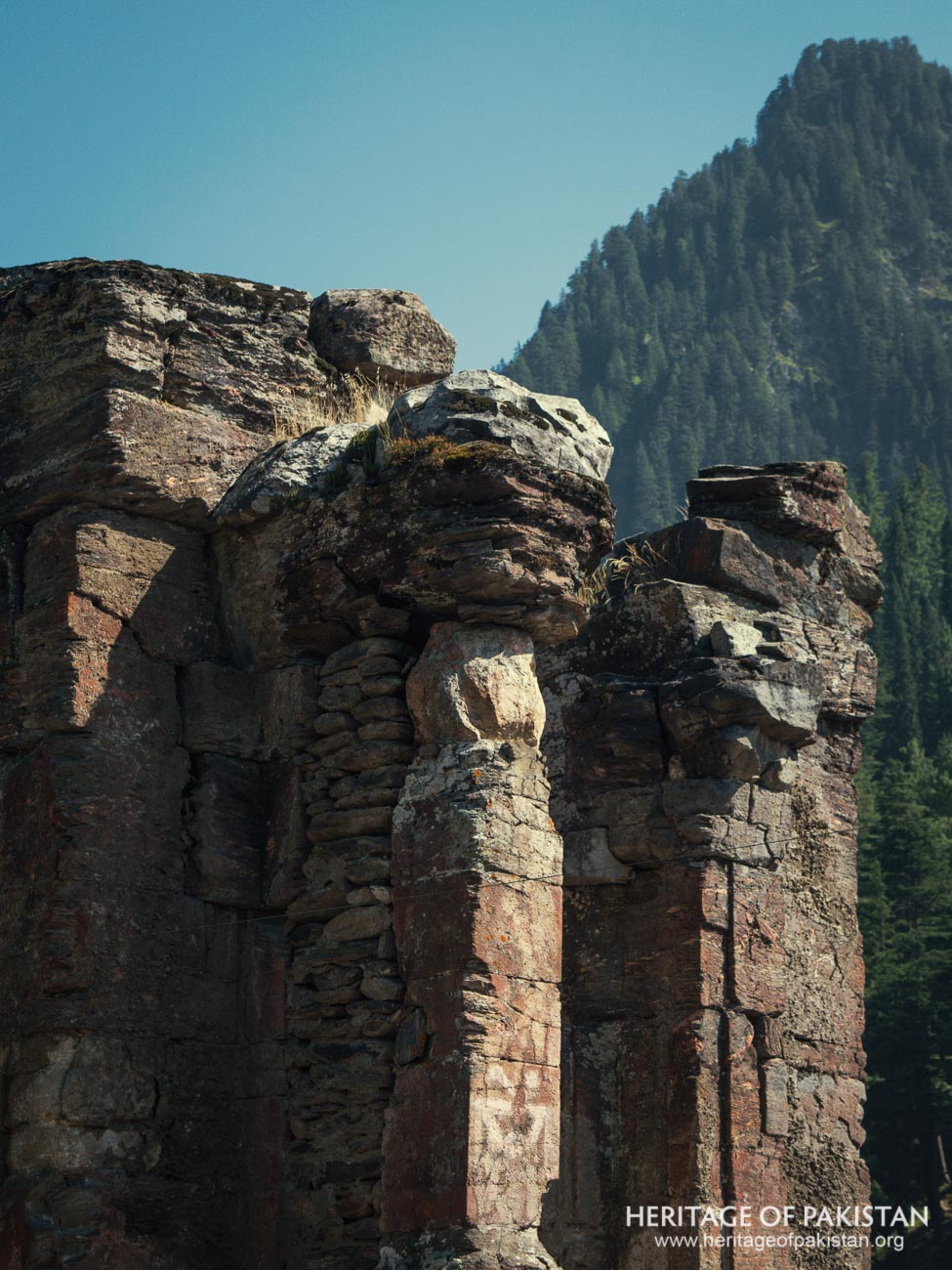
The northern boundary wall of the temple is a complete structure made of stone slabs, mirroring the construction techniques used in the main temple. This wall, with a solid base starting from the ground level of the northern settlement, also serves to separate a few field terraces. At the midpoint of the northern wall is a trefoil arch chamber or cell, flanked by pillar arches with base shafts. The trefoil arches and shikara design of the temple exemplify the trabeated style of architecture prevalent in the region. The temple also has a west-facing door, which appears to serve as an alternative entrance.
The temple's construction is notable for its massively large stone block masonry, a characteristic feature of temples in and around the Kashmir Valley, including those in Neelum Valley. The construction materials include three types of stone: red stone, local mountain granite, and a mixture of marble. These materials not only provide structural integrity but also contribute to the temple's distinctive stone aesthetic. The medieval period temple architecture of Kashmir, to which Sharda Peeth belongs, often exhibits strong Grecian influences. This is believed to be a result of the ancient Kashmiri architects borrowing styles from the Bactrian and Indo-Greeks during their occupation of frontier lands. The temples from this period, including Sharda Peeth, are constructed from magnificently chiseled massive stones and often feature a single chamber with a portico.
The temple's Panj-Yatna style, prevalent in many parts of India, features four-cornered shrines around a central Cella (Garbhagriha), the innermost part of a Hindu temple usually used to house the deity's image, and often includes a small hall (Mandapa) in front for worshipers. With the obvious planning features of the Sharda Temple, it is evident that it was designed as a Hindu temple, and not as a Buddhist site. Its similarity to the ruined Cellas at Kapetsvar (Kother at Achhabel) further asserts this classification. The temple's main sanctum, characterized by its plain and unadorned construction, features false arches on three sides, each measuring 6 meters in height. Flanking the porch are two square-shaped pillars, each 6 meters high and carved from solid stone blocks measuring 0.7 x 0.7 meters in section size. The stones used in the walls of the Sharda Temple measure 2.1 x 1.2 meters. Local beliefs about the temple, constructed from huge blocks of stone, often link it with deos and spirits, reflecting the cultural and spiritual significance attributed to it over centuries. Despite damage, the temple's foundational structure remains robust.
Historical records indicate that the roof of the Sharda Peeth Temple has been missing since 1870, when Charles Bates visited the site. Bates noted that the roof had been temporarily re-erected with makeshift materials for protection. The single largest stone on the top of the pillars near the roof, serving as its lintel, suggests that the temple originally had a flat or pediment roof similar to Doric style architecture. This style, renewed from timber to stone slab in the 4th century CE, highlights the blend of local and Grecian influences in the temple's design.
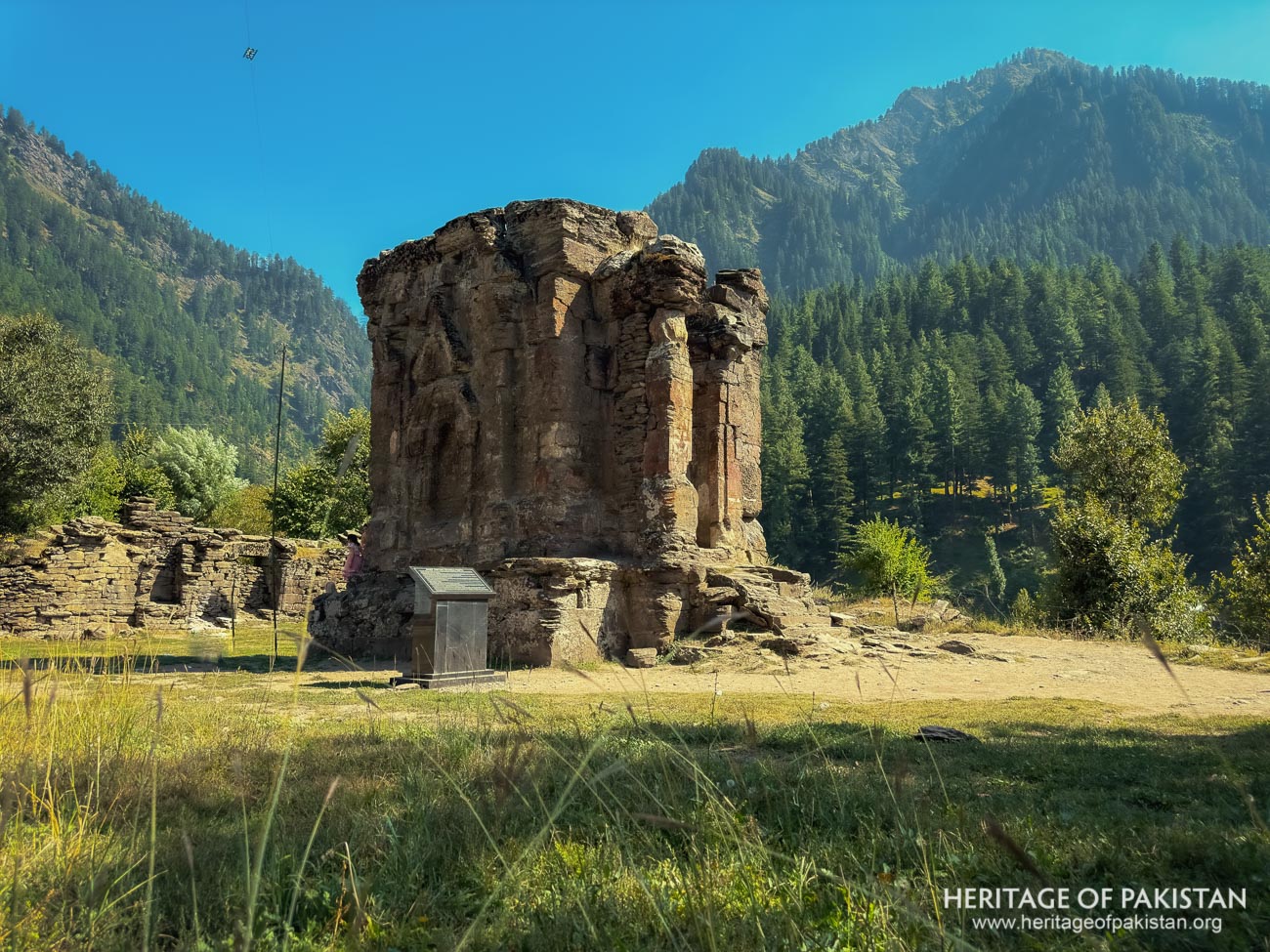
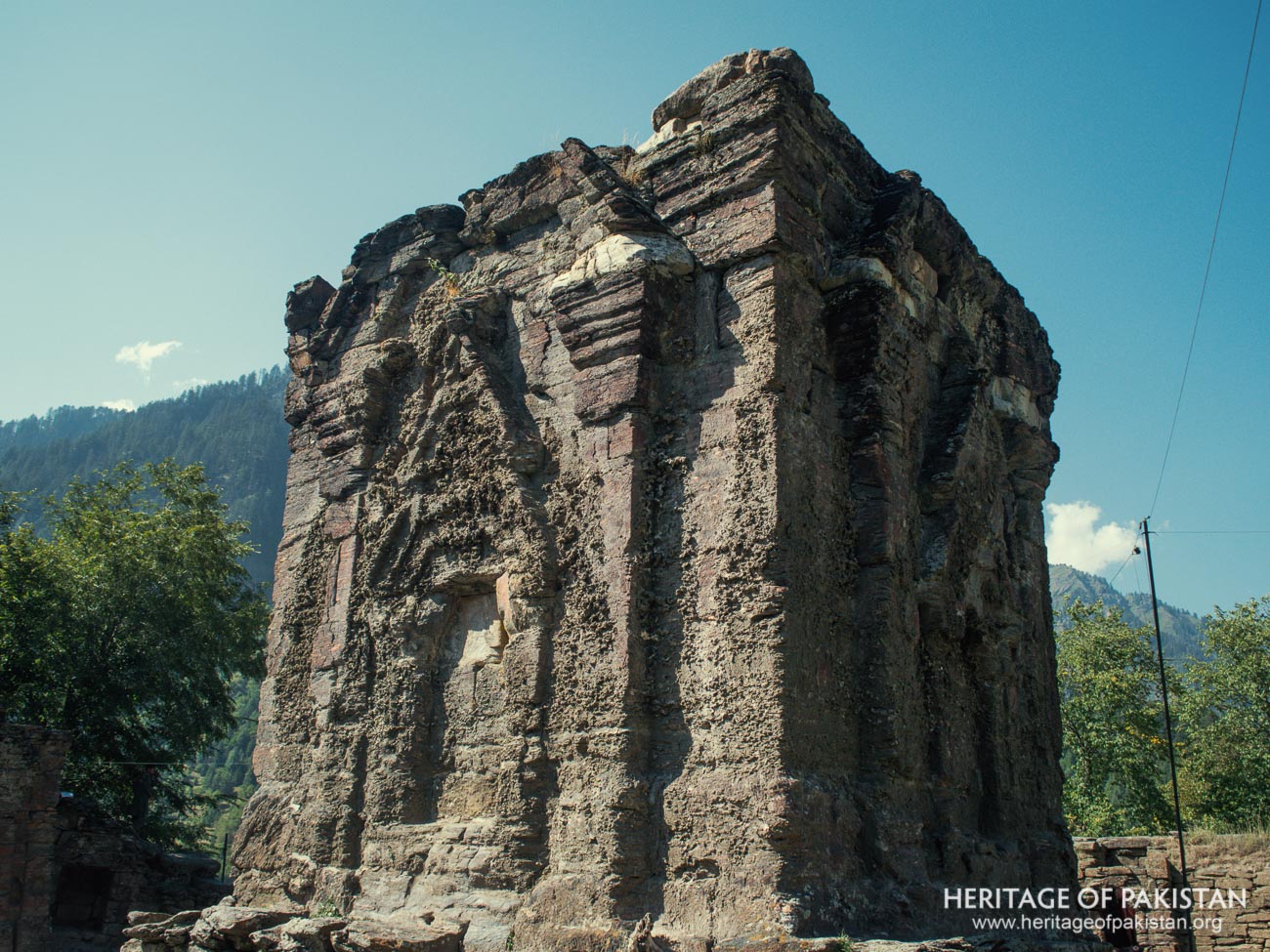
Discover the Sharda Peeth image gallery and immerse yourself in photographs

All Photographs by Syed Noor Hussain and Sania Azhar.
All Rights Reserved. Photos may be used for Non-Commercial, Educational, Artistic, Research, Non-Profit & Academic purposes.
Commercial uses require licensing agreement.


Add a review